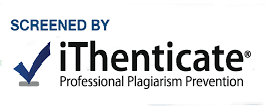ANALISA PARAMETER FREKUENSI PADA PENGUJIAN DAN KALIBRASI ELEKTROSTIMULATOR
DOI:
https://doi.org/10.35328/kesmas.v12i1.2445Keywords:
Elektrostimulator,Kalibrasi,ElektrodaAbstract
An electrostimulator is a device that produces millions of tiny electrical signals that enter the body through an electrode that is placed on the surface of the skin near the affected area or above it. Electrostimulators are widely used to determine the response of nerve and muscle cells to certain electrical stimuli. In this study, the process of analyzing the frequency parameters in the testing and calibration of the electrostimulator was carried out in which the calibration was aimed to find out some deviations between the calibrated tool and the calibrator. The method used is the work method that has been determined by the Ministry of Health of the Republic of Indonesia, which includes physical inspection and tool functions, electrical safety and frequency measurement performance testing. For the results of this study on physical examination and tool function by 10%, for electrical safety checks the value obtained is 40%, performance testing is 50%.
References
S. Suwarni and F. Nugroho, “Beda Efektivitas Pengaruh Pemberian TENS Dan Stretching Dengan Lllt Dan Stretching Terhadap Penurunan Nyeri Pada
Kasus Sindroma Piriformis,” Interes. J. Ilmu Kesehat., vol. 8, no. 2, pp. 184–188, 2019, doi: 10.37341/interest.v8i2.174. DOI: https://doi.org/10.37341/interest.v8i2.174
L. Li, Y. Z. Chen, H. Zhou, H. Ma, and J. Liu, “The application of hall sensors ACS712 in the protection circuit of controller for humanoid robots,” ICCASM 2010 - 2010 Int. Conf. Comput. Appl. Syst. Model. Proc., vol. 12, no. Iccasm, pp. 101–103, 2010, doi: 10.1109/ICCASM.2010.5622149. DOI: https://doi.org/10.1109/ICCASM.2010.5622149
Y. Setiawan, “Tens triangle and square wave microcontroller,” pp. 1–8, 2016.
G. Rietveld, J. H. N. Van Der Beek, and E. Houtzager, “Accurate DC Current Ratio Measurements for Primary Currents up to 600 A,” IEEE Trans. Instrum.
Meas., vol. 64, no. 11, pp. 3055–3061, 2015, doi: 10.1109/TIM.2015.2434096. DOI: https://doi.org/10.1109/TIM.2015.2434096
[A. Kuhn, T. Keller, M. Lawrence, and M. Morari, “The influence of electrode size on selectivity and comfort in transcutaneous electrical stimulation of the
forearm,” IEEE Trans. Neural Syst. Rehabil. Eng., vol. 18, no. 3, pp. 255–262, 2010, doi: 10.1109/TNSRE.2009.2039807. DOI: https://doi.org/10.1109/TNSRE.2009.2039807
S. F. Wang, J. P. Lee, and H. L. Hwa, “Effect of transcutaneous electrical nerve stimulation on primary dysmenorrhea,” Neuromodulation, vol. 12, no. 4, pp. DOI: https://doi.org/10.1111/j.1525-1403.2009.00226.x
–309, 2009, doi: 10.1111/j.1525- 1403.2009.00226.x.
M. Program, S. Fisioterapi, F. Kedokteran, and U. Udayana, “Pemberian Transcutaneous Electrical Nerve Stimulation ( Tens ) Dapat Meningkatkan Ketajaman,” no. August, pp. 1–8, 2013.
A. S. Rizqi, “Transcutaneous Electrical Nerve Stimulation (Tens) Affecting Pain Treshold,” Link, vol. 14, no. 2, p. 79, 2018, doi: 10.31983/link.v14i2.3775. DOI: https://doi.org/10.31983/link.v14i2.3775
A. Sonwane, C. Y. Patil, and G. Deshmukh, “and Basic Principles for the use of TENS,” 2018 2nd Int. Conf. Trends Electron. Informatics, no. Icoei, pp.
–287, 5193.
Downloads
Published
Issue
Section
License
Copyright (c) 2023 Al-Tamimi Kesmas: Jurnal Ilmu Kesehatan Masyarakat (Journal of Public Health Sciences)

This work is licensed under a Creative Commons Attribution 4.0 International License.














